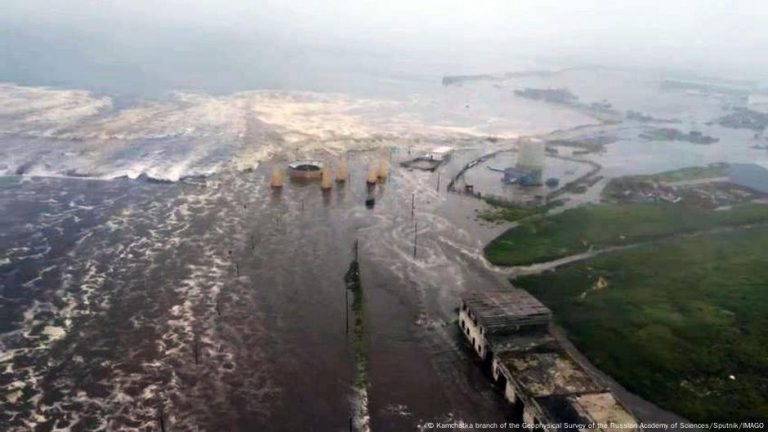Tsunami Fears and Misinformation Surge After Powerful Earthquake Off Russia’s Coast
A major earthquake, measuring magnitude 8.8, struck off Russia’s eastern coast, triggering tsunami warnings and evacuations across the Pacific rim, from Japan to Peru. While the earthquake itself caused limited damage, the ensuing tsunami waves reached Russia, Japan, and Hawaii, raising concerns about further devastation. However, amidst the genuine fear and uncertainty, a wave of misinformation quickly spread online, exacerbating anxieties and hindering accurate reporting of the situation. This misinformation ranged from recycled footage to AI-generated fakes, highlighting the challenges of navigating the information landscape during a crisis.
Oprah Winfrey Caught in the Crosshairs of Misinformation
Talk show host Oprah Winfrey, who owns a property in Maui, Hawaii, became the target of false claims regarding access to a private road leading to her estate. Social media posts alleged that Winfrey was blocking public access to the road, preventing residents from evacuating to higher ground. These claims were quickly debunked by the Maui Police Department and Winfrey’s spokesperson, who confirmed the road was open. Despite these confirmations, the false narrative continued to spread online, fueled by anger and speculation. This incident underscores the speed and persistence of misinformation, even when contradicted by official sources and readily available evidence.
Old Footage Resurfaces as “Evidence” of Tsunami’s Impact
As with many breaking news events, older, unrelated footage was repurposed and falsely presented as depicting the aftermath of the earthquake and tsunami. One viral video showed a couple in a rooftop pool fleeing during an earthquake. While the footage was authentic, it originated from a 2025 earthquake in Myanmar, not the recent event in Russia. Similarly, videos purportedly showing the tsunami’s impact were actually recordings of past events in Greenland and South Africa. The ease with which such footage can be recontextualized and disseminated online poses a significant challenge to accurate reporting.
Speculation Surrounds Stranded Whales in Japan
Adding to the confusion, a video of stranded whales on a Japanese beach sparked speculation online, with some users suggesting a link to the tsunami. While the whales were indeed stranded, local authorities and marine experts clarified that the stranding occurred before the tsunami and likely had unrelated causes. Rumors of whales being harbingers of earthquakes are common, but lack scientific basis. This case exemplifies how genuine events can be misinterpreted and linked to unrelated phenomena, fueling unfounded theories.
AI-Generated Content Fuels Misinformation Fire
Adding a new dimension to the misinformation landscape was the emergence of AI-generated images and videos purporting to show the tsunami’s impact. One viral image depicted Balboa Island, California, submerged under water, despite no official reports of such devastation. The image was easily debunked as AI-generated due to visual inconsistencies and confirmation from AI detection tools. Another AI-generated video depicted beachgoers calmly sunbathing as a tsunami wave approached, further demonstrating the potential of AI to create realistic yet entirely fabricated scenarios. This development raises serious concerns about the potential for AI-generated content to become indistinguishable from real footage, further complicating efforts to combat misinformation.
Challenges of Discerning Truth Amidst the Noise
The spread of misinformation following the Russia earthquake highlights the urgent need for critical thinking and media literacy. The rapid dissemination of false or misleading content through social media platforms underscores the importance of verifying information from multiple sources and relying on reputable news outlets and official statements. The increasing sophistication of AI-generated content further complicates this task, demanding more vigilant scrutiny and advanced tools for detecting manipulated media. As misinformation continues to evolve and proliferate, individuals and communities must actively engage in discerning truth from falsehood to navigate the increasingly complex information landscape.


